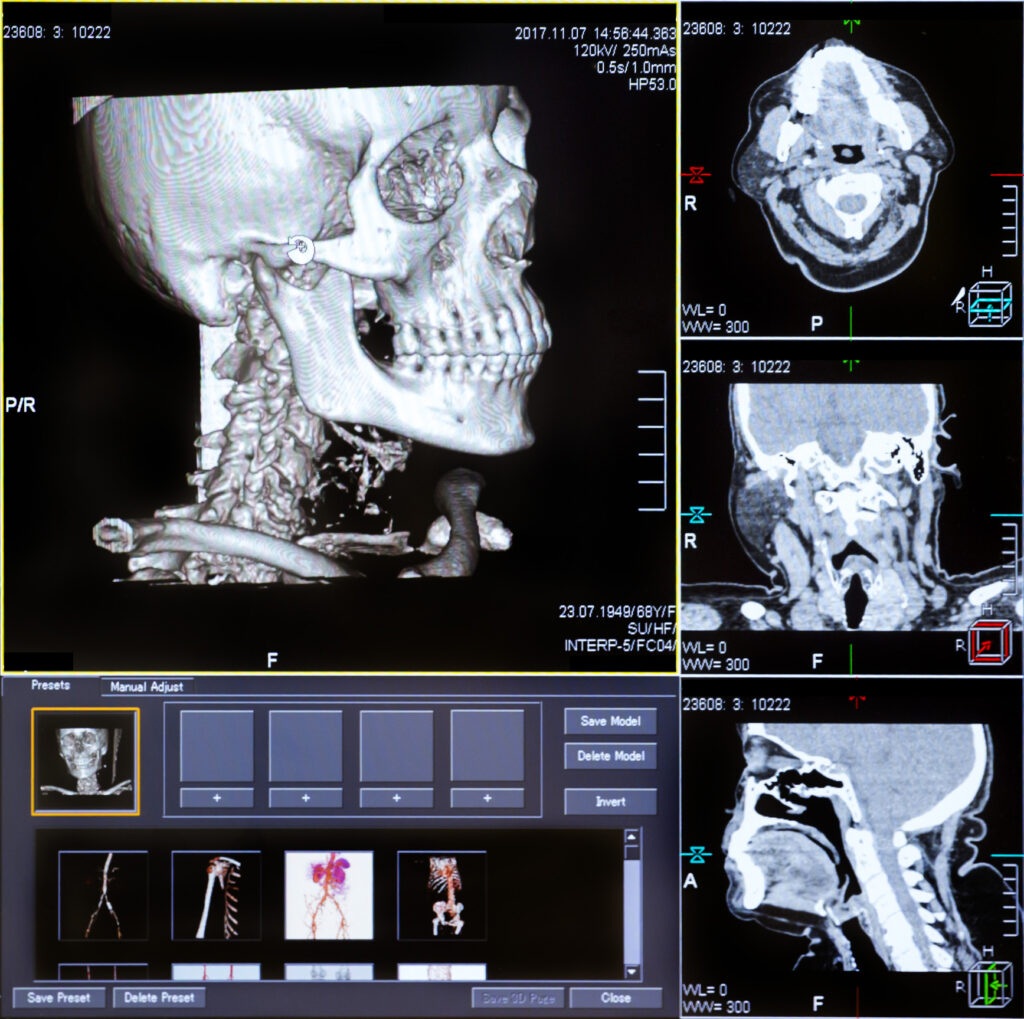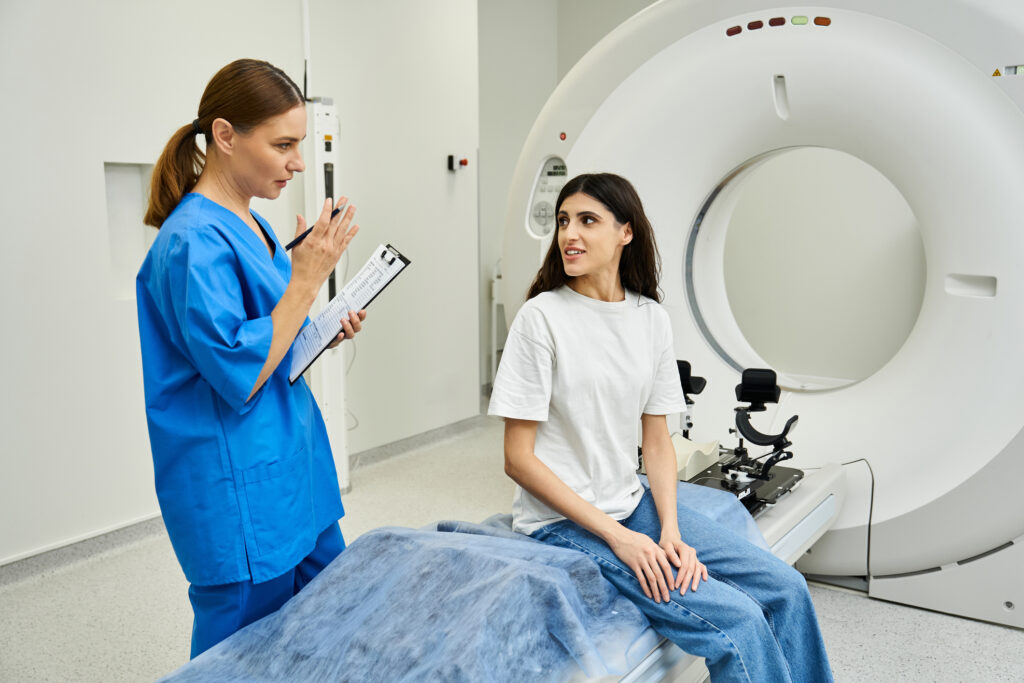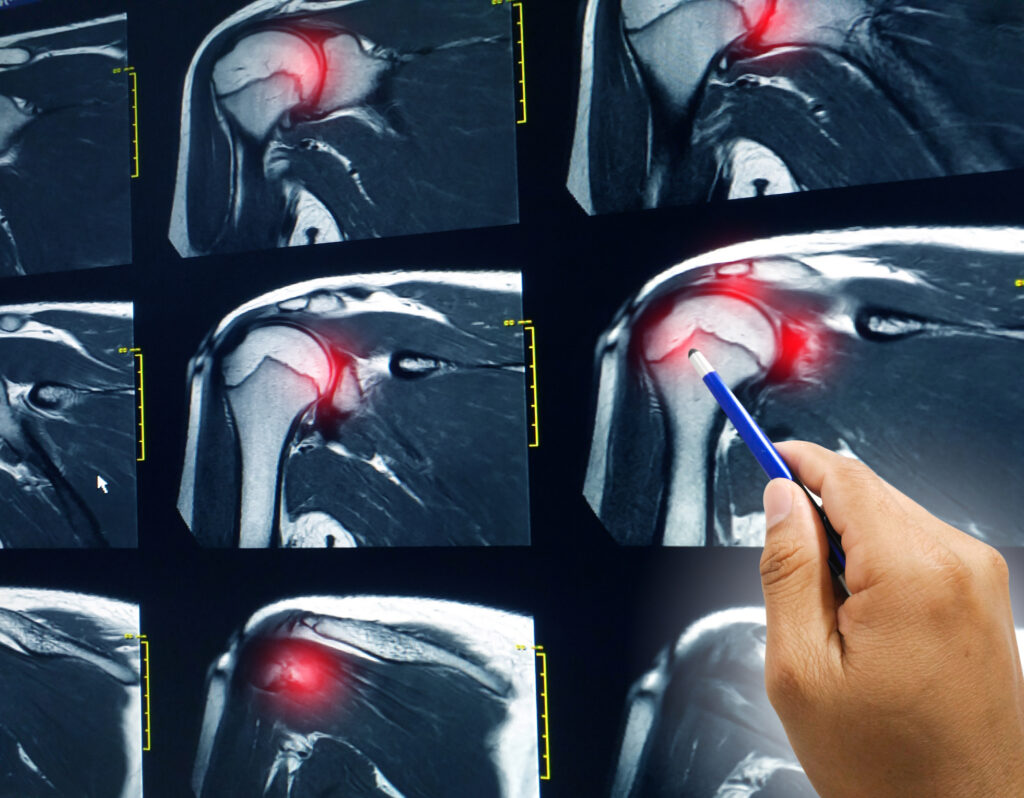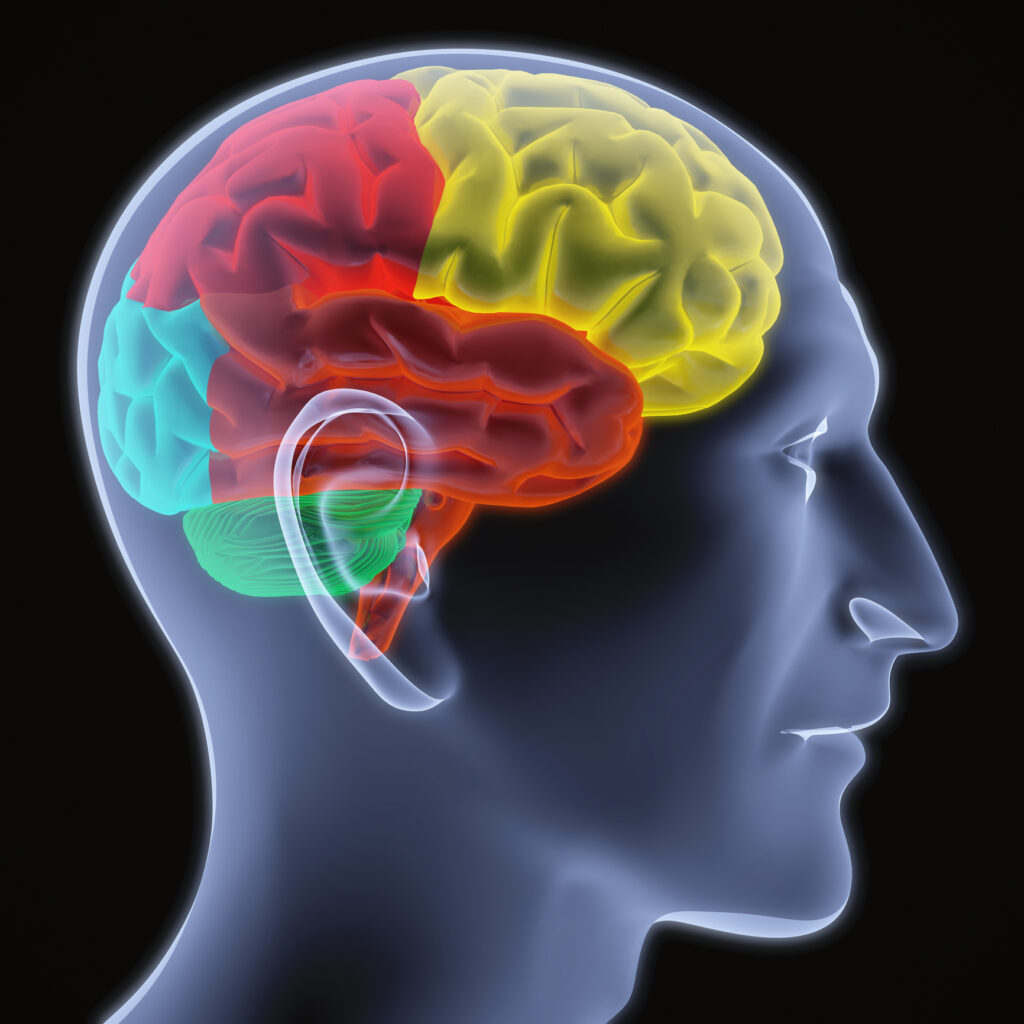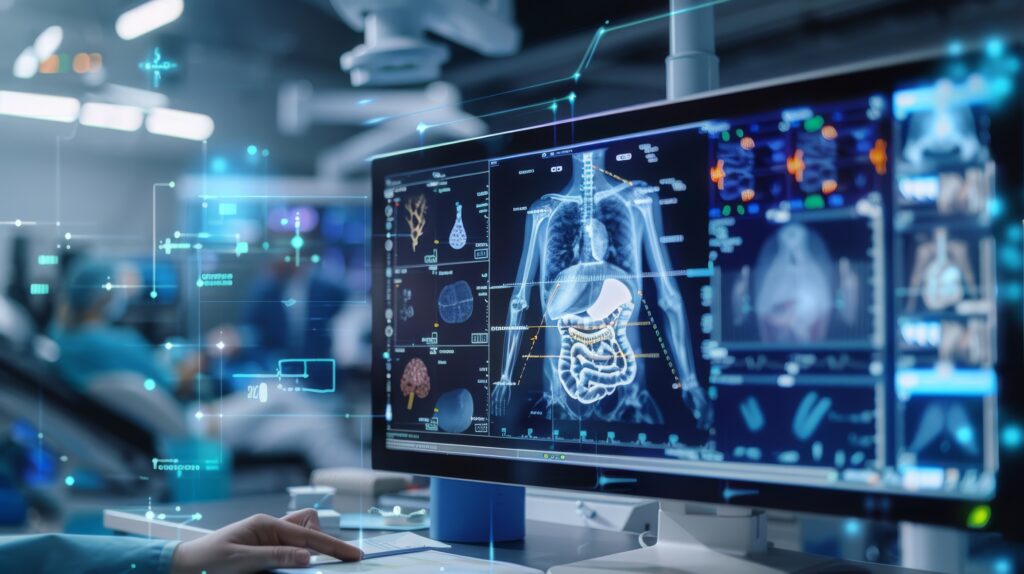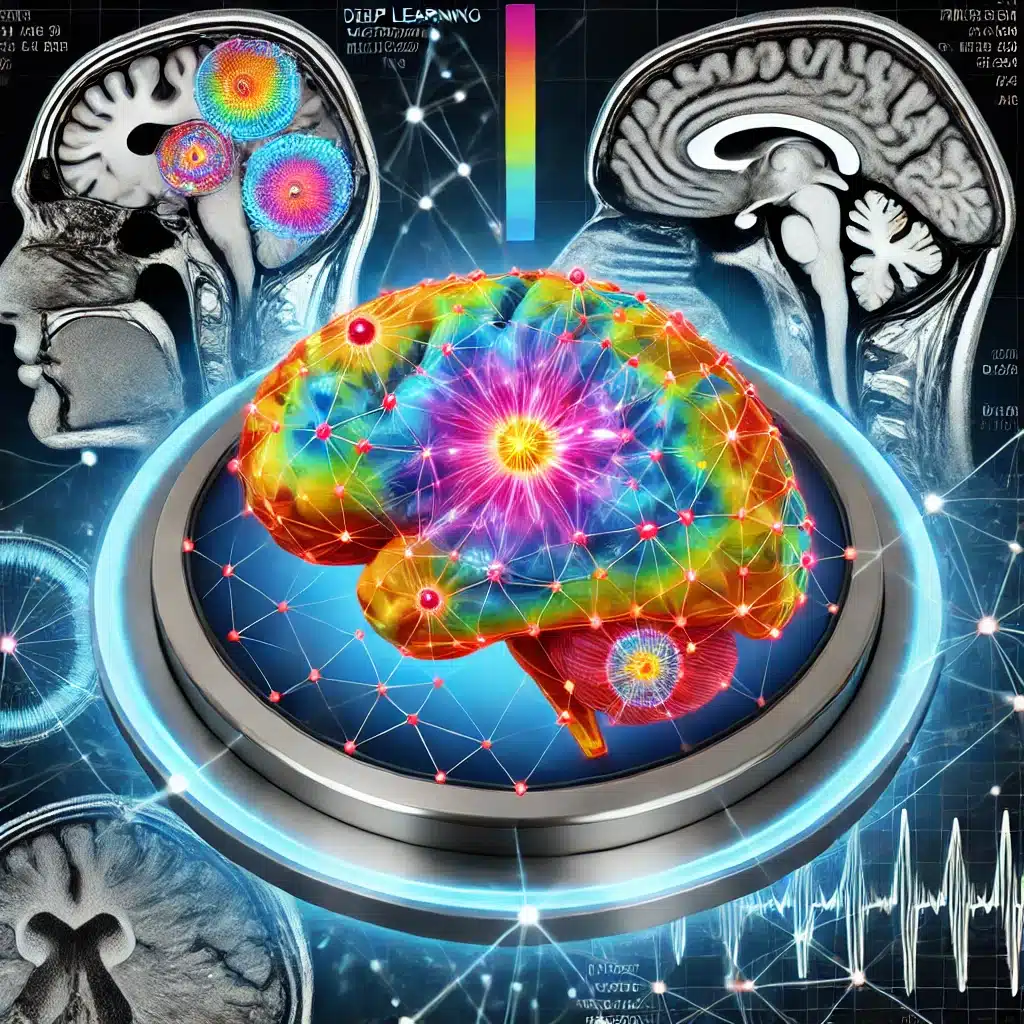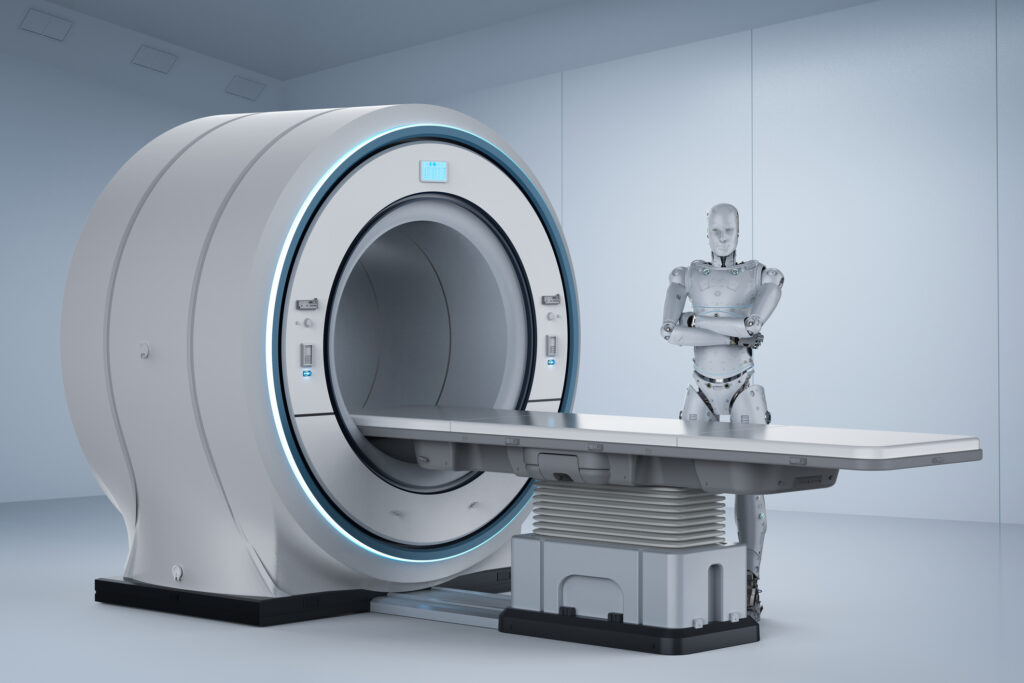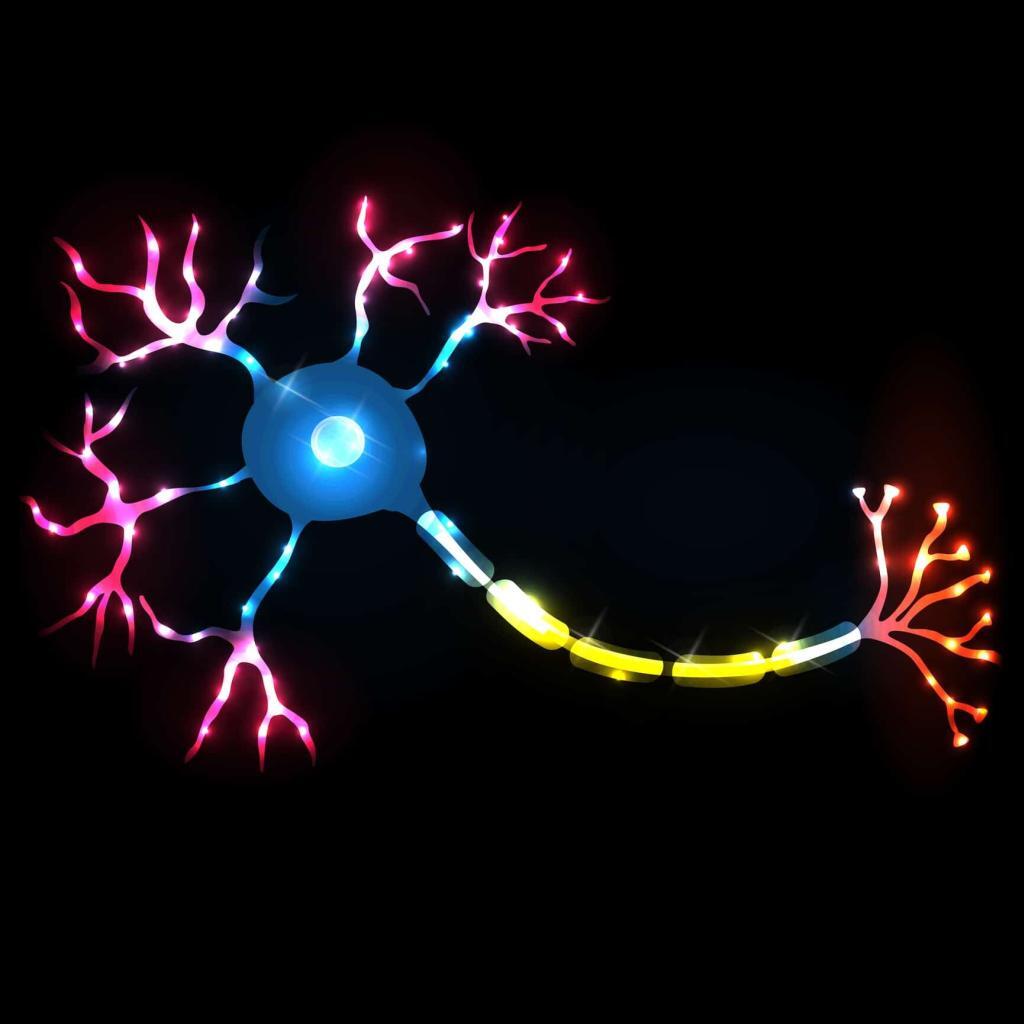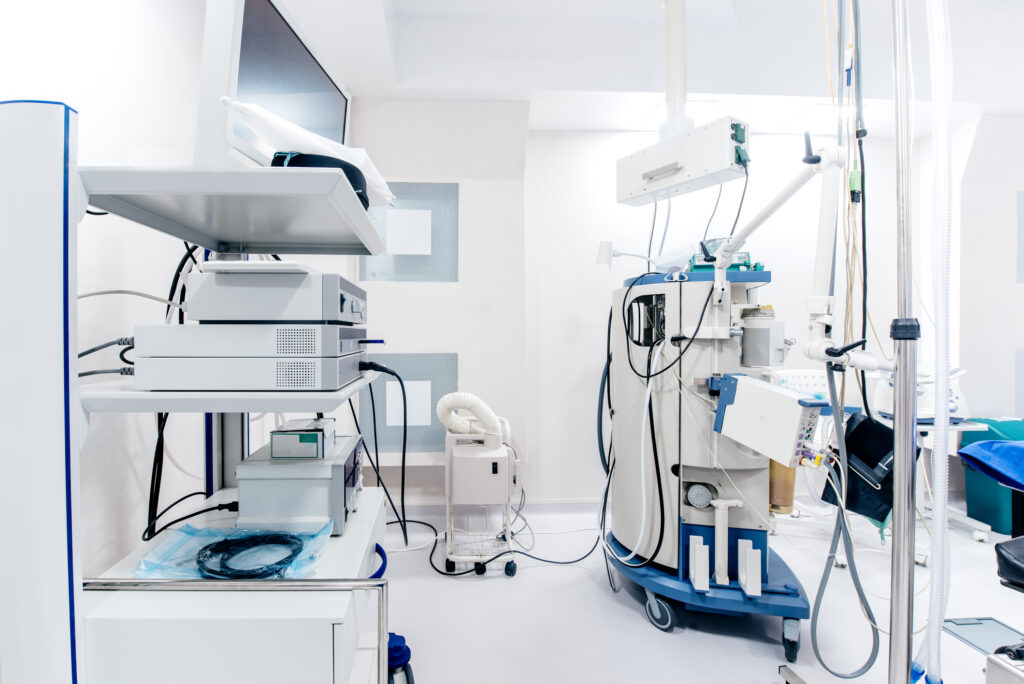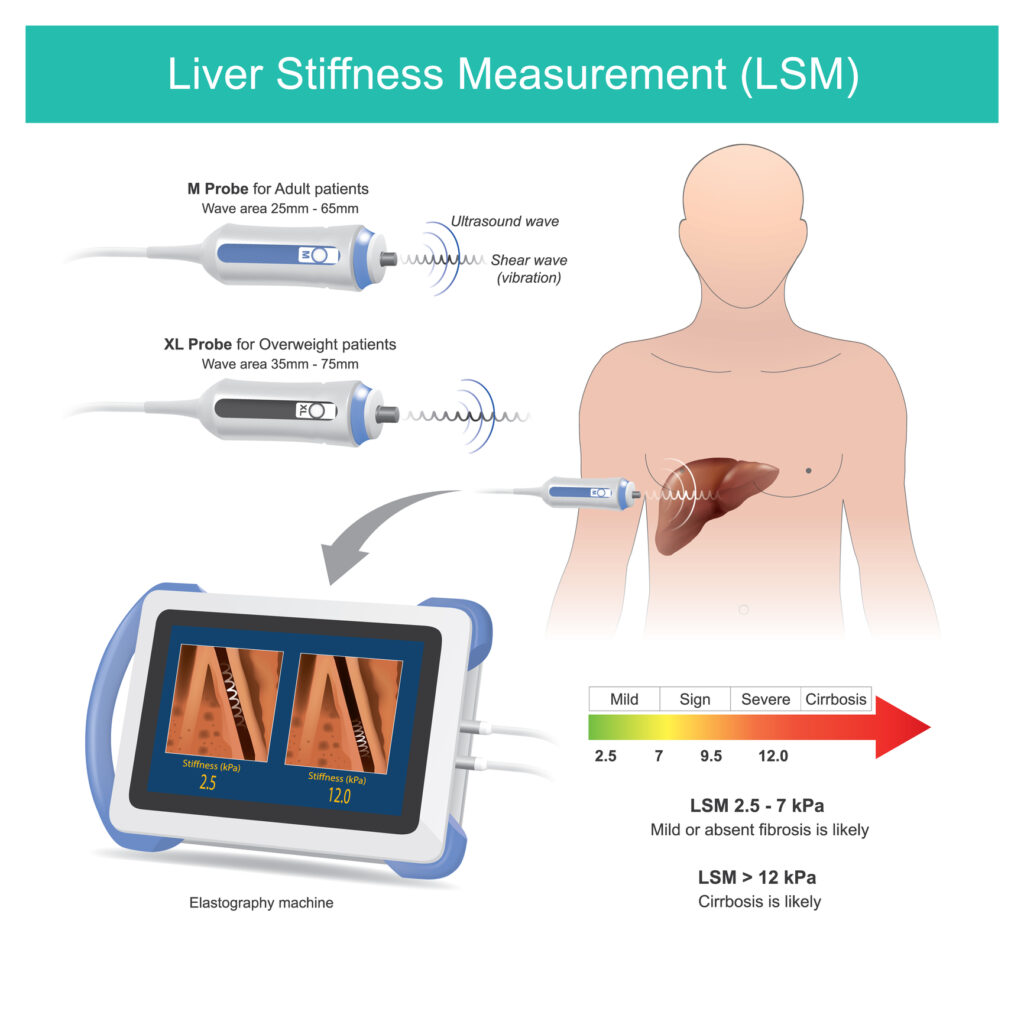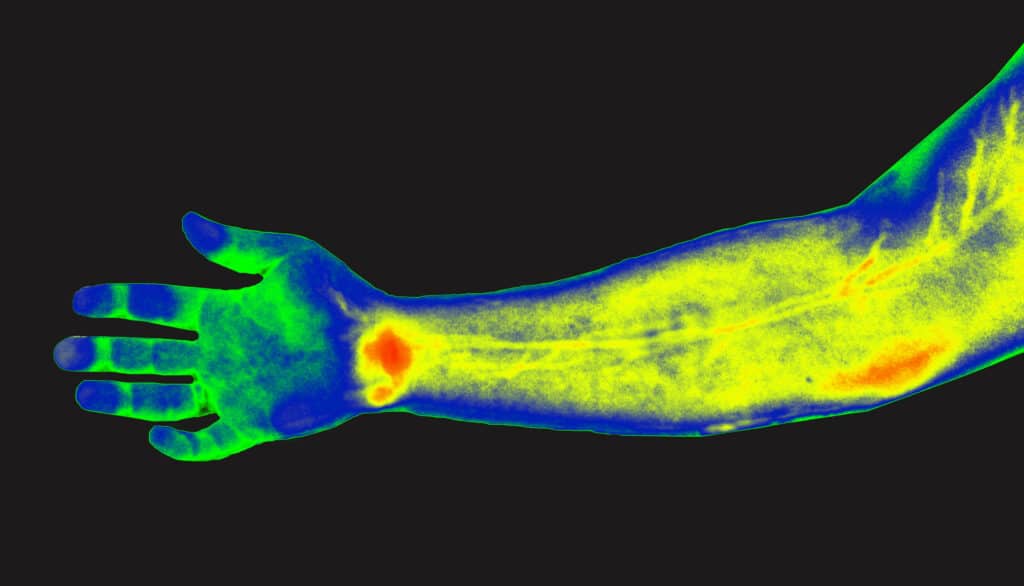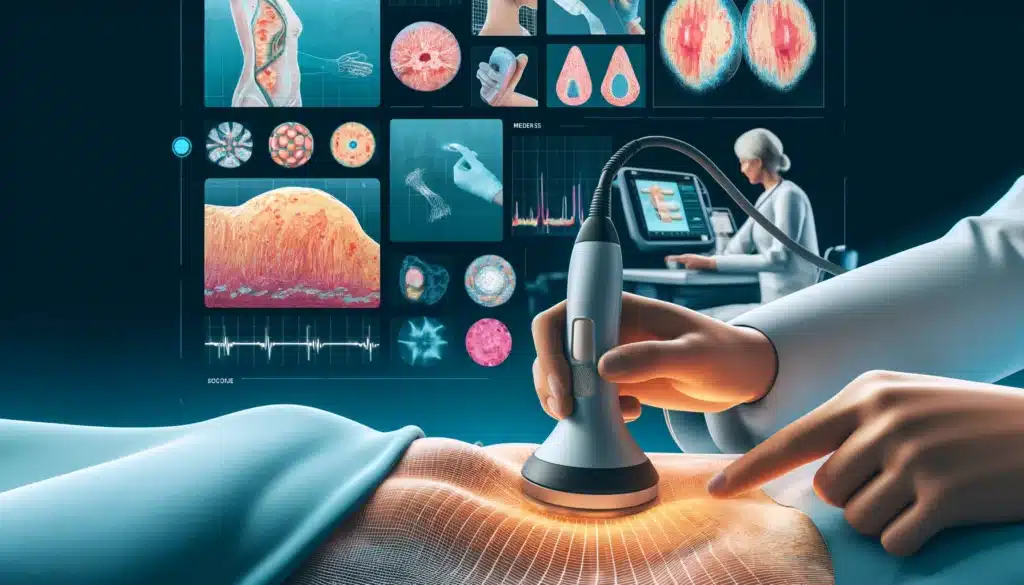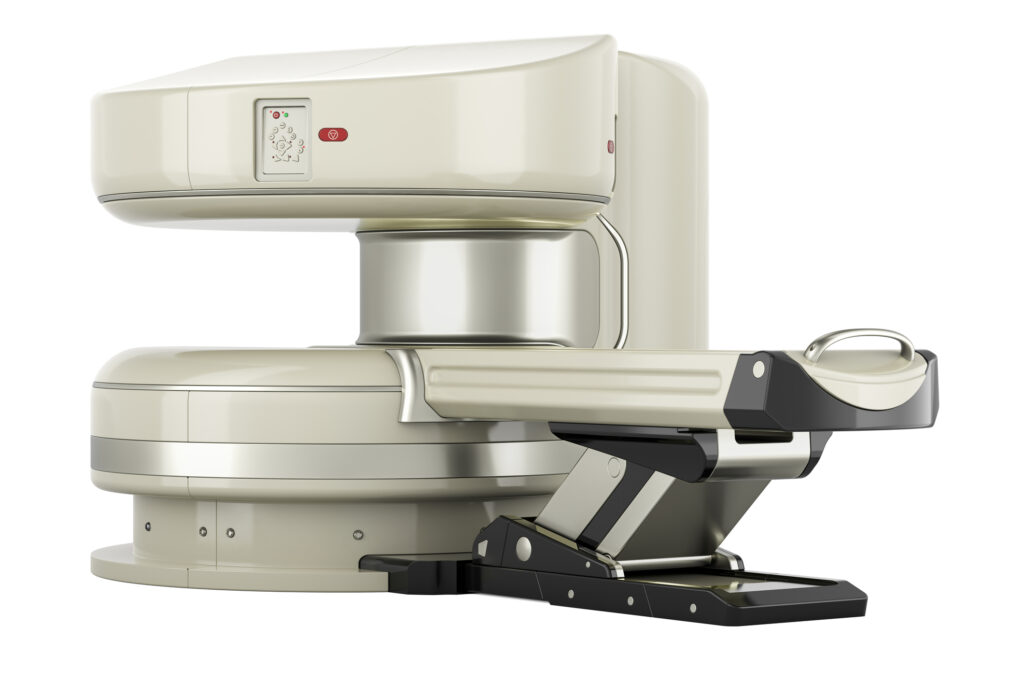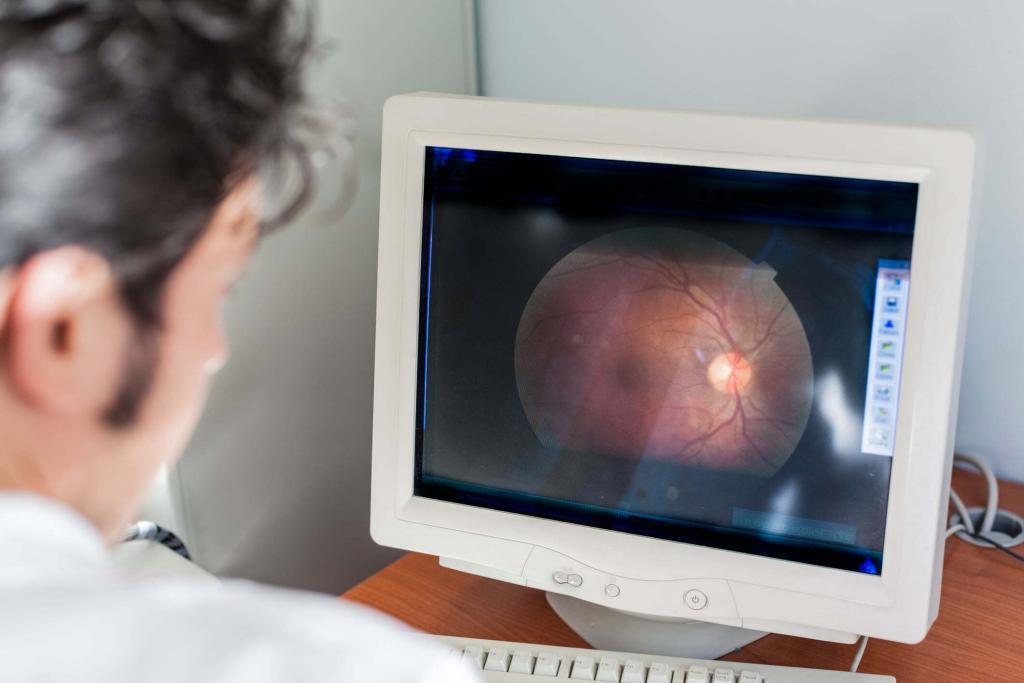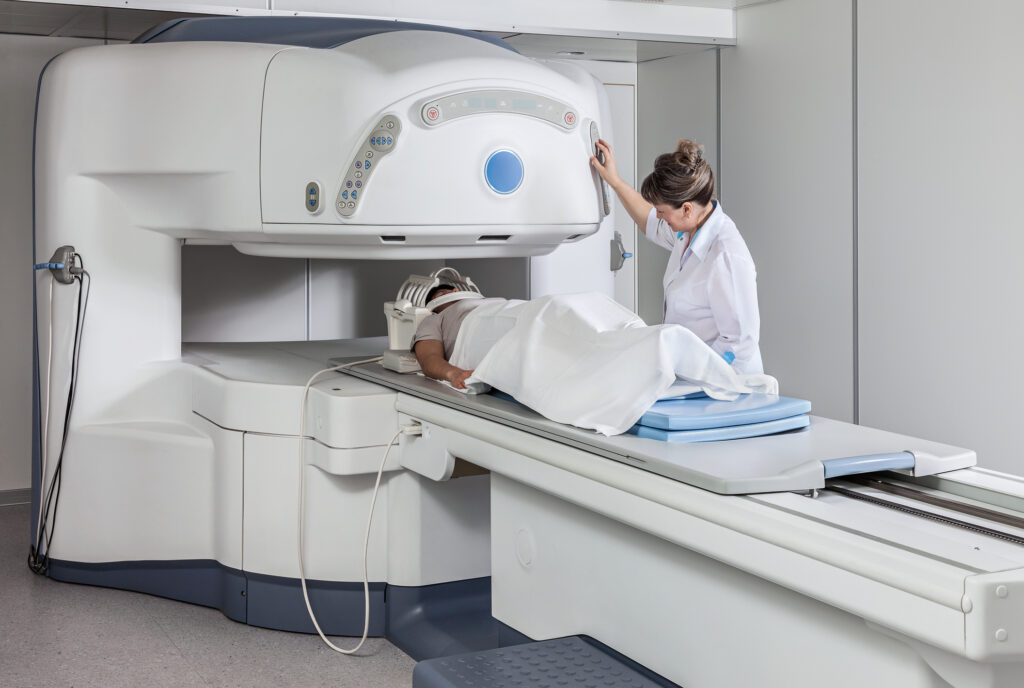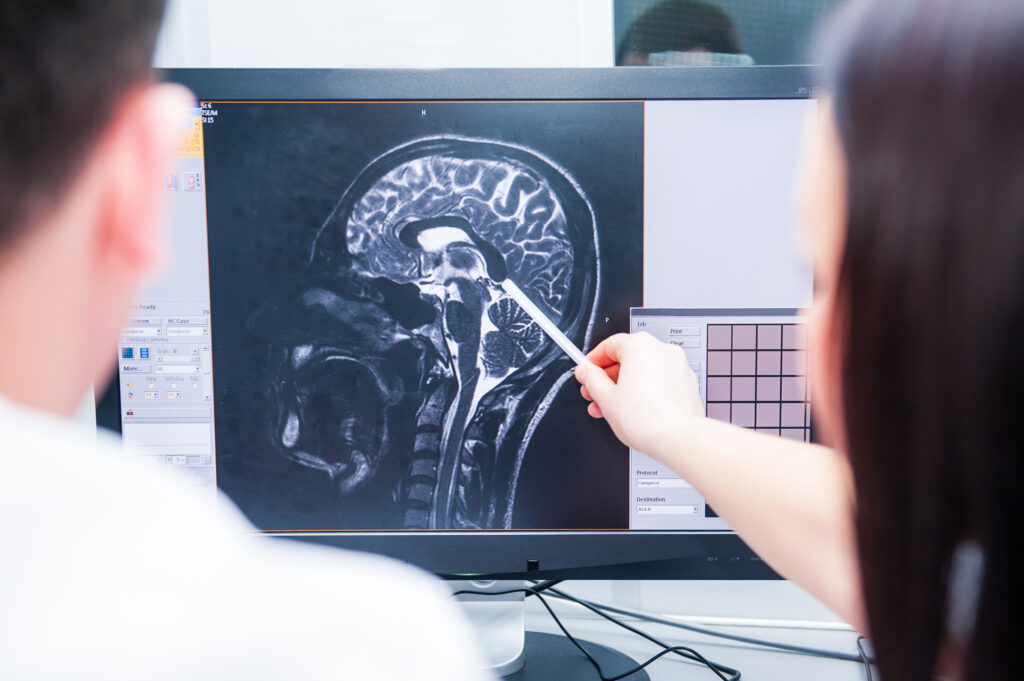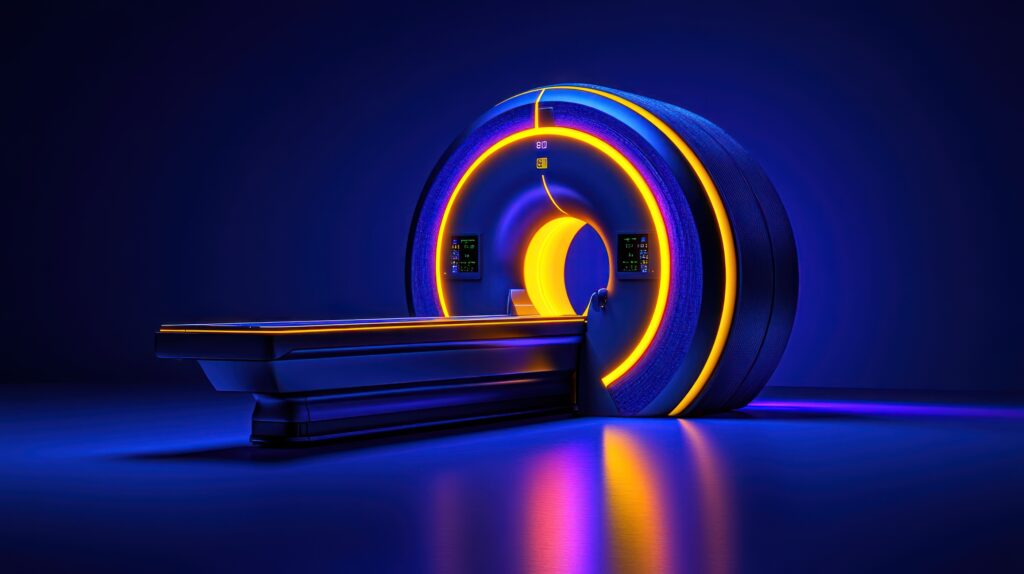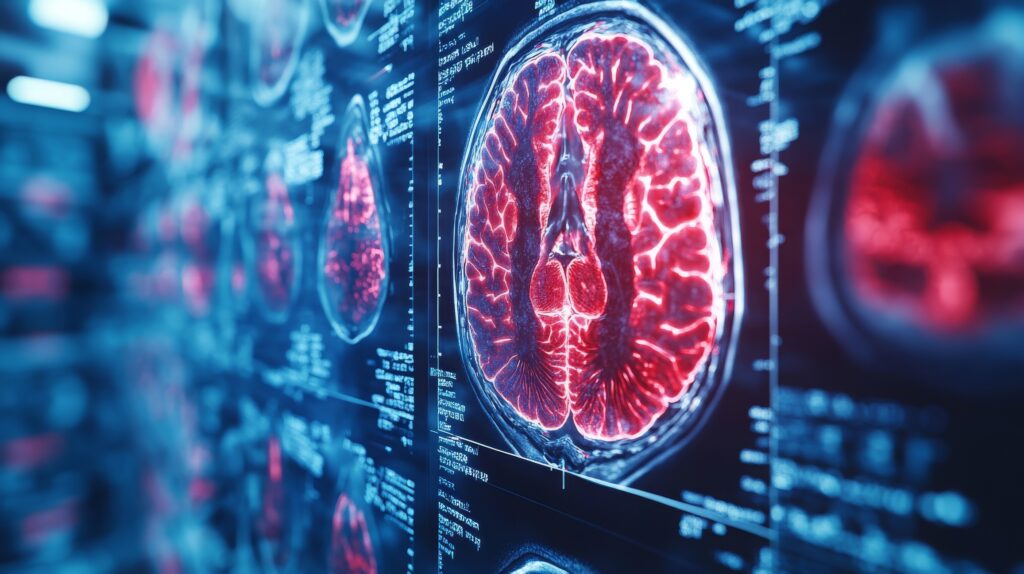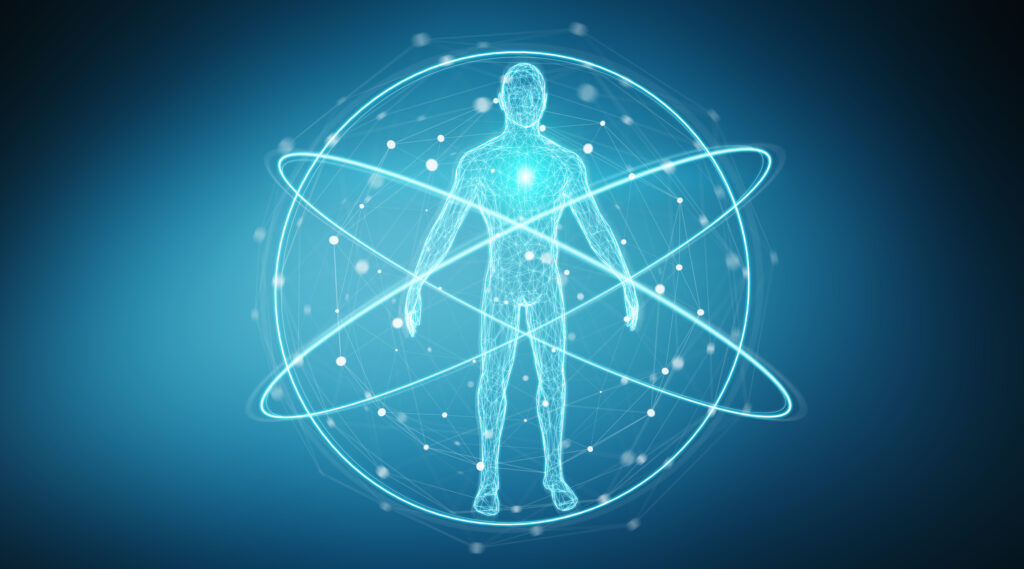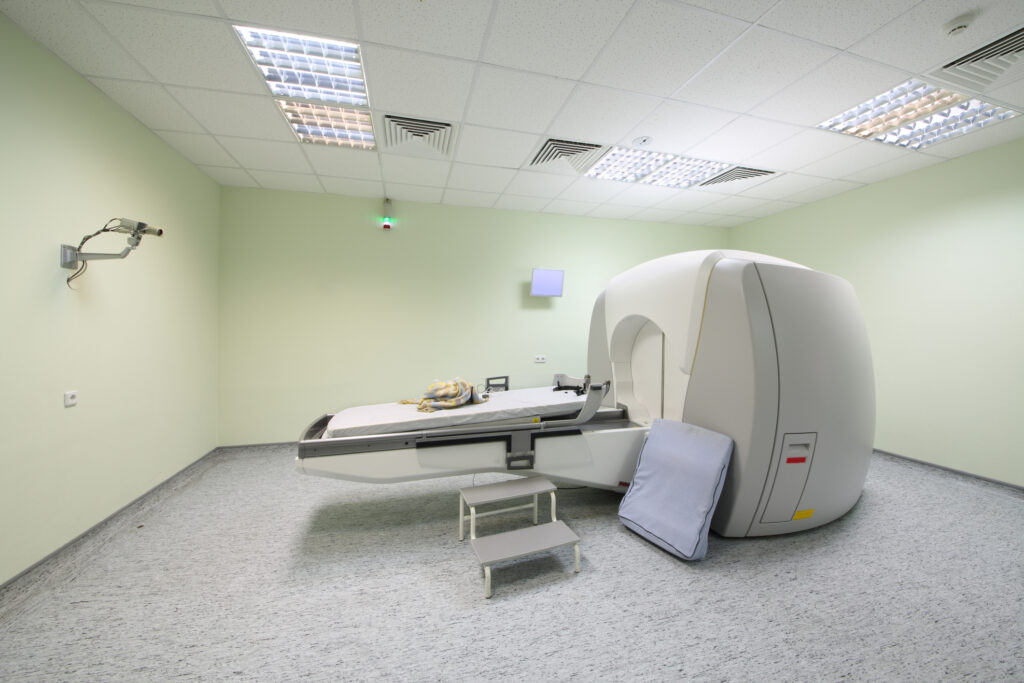MRI
MRI (Magnetic-resonance Imaging) is a non-invasive medical imaging modality that uses powerful magnets, radio waves, and advanced computer algorithms to produce detailed images of the body’s internal structures. This sophisticated imaging technique allows physicians to visualize the body’s soft tissues, organs, and other anatomical features with high resolution and contrast without harmful ionizing radiation.
MRI was first developed in the 1970s and has become an essential diagnostic tool for various medical disciplines. Its applications span from detecting tumours and abnormalities in the brain and spinal cord, assessing joint injuries and cardiovascular diseases, and evaluating organ function.
The fundamental principle behind MRI is based on the interaction between the magnetic field and the hydrogen atoms present in the body’s water molecules. When a patient is placed inside the MRI scanner, the machine creates a strong magnetic field, causing the hydrogen atoms to align with it. The scanner then emits a radiofrequency (RF) energy pulse, temporarily disrupting the hydrogen atoms’ alignment. As these atoms return to their original alignment, they emit RF signals detected by the scanner’s coil. Specialised computer algorithms then process the generated data to reconstruct an image of the scanned area.
One of the primary advantages of MRI is its ability to differentiate between various types of soft tissue, providing high-resolution images with excellent contrast. This makes it particularly valuable for visualizing the brain, spinal cord, and joints, where subtle differences in tissue composition and structure can be critical in diagnosing conditions such as tumours, multiple sclerosis, or ligament injuries.
MRI is also a versatile imaging modality, with several specialized techniques available to provide additional information about the area of interest. For example, functional MRI (fMRI) measures changes in blood flow to detect regions of increased neural activity, which can be useful in studying brain function or planning neurosurgery. In addition, diffusion-weighted imaging (DWI) and diffusion tensor imaging (DTI) can reveal information about the integrity and orientation of white matter tracts in the brain, aiding in diagnosing conditions like stroke or traumatic brain injury.
Despite its many advantages, MRI does have some limitations. For example, the strong magnetic field can pose a risk for patients with implanted metallic devices, such as pacemakers or cochlear implants. Additionally, the confined space and loud noises generated by the scanner can cause discomfort or anxiety for some patients. Moreover, MRI examinations can be time-consuming and expensive compared to other imaging modalities like X-rays or ultrasound.
You are here:
home » MRI

